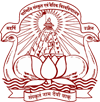Introduction
The importance of an education in the ancient art and science of Yoga are undeniable. Yoga education can supplement school and university education. It can prepare the students physically and mentally for the integration of their physical, mental and spiritual faculties so that the students can become healthier, saner and more integrated members of the society and of the nation.
The importance of Yoga is also evident in how it helps in self-discipline and self-control, leading to immense amount of awareness, concentration and higher level of consciousness.
The aim of yoga is to promote holistic health and well-being, including physical, mental, and emotional health. The ultimate goal of yoga is to achieve self-realization and spiritual enlightenment, which is often described as a state of unity with the divine or higher consciousness.
The objectives of yoga can be broken down into several categories:
Physical health: Yoga aims to improve physical health by increasing flexibility, strength, balance, and cardiovascular health.
Mental health: Yoga aims to promote mental health by reducing stress and anxiety, improving focus and concentration, and enhancing overall emotional well-being.
Spiritual growth: Yoga aims to promote spiritual growth by cultivating self-awareness, compassion, and inner peace.
Self-realization: Yoga aims to help individuals achieve self-realization, which is the ultimate goal of yoga practice. Self-realization involves understanding one’s true nature and purpose in life and achieving a sense of unity with the divine or higher consciousness.
Overall, the aim and objectives of yoga are to promote holistic health and well-being, facilitate personal growth and self-realization, and ultimately, help individuals achieve a sense of unity with the divine or higher consciousness.
Objective
1) To enable the student to have good health.
2) To practice mental hygiene.
3) To possess emotional stability.
4) To integrate moral values.
5) To attain higher level of consciousness.
All these aims and objectives should be incorporated in an integrated manner.
Outcomes
All these aims and objectives should be incorporated in an integrated manner.
Yoga education could help to equip oneself with basic knowledge about one’s personality, to learn to handle oneself well in all life situations, to learn techniques of gaining good health, to develop a discriminative mind capable of knowing the real from the unreal and to face the dualities of life with equanimity.
Yoga education can start from standard II up to standard IX. This would require about 480 sessions. For details of core learning, skill learning and concomitant learning – refer Cyclopedia Vol. II on Yoga education; Vol. I on Asanas.
Yoga education can enhance all the activities of the students, be it academic or sport or social. Yoga techniques provide improved attention in studies, better stamina and co-ordination for sports and a heightened awareness and balanced attitude for social activity. This makes the importance of Yoga education quite clear.
Yoga education can be integrated in school education during the time set aside for P.T. but in a calm and quiet place creating the proper atmosphere for its proper study and practice.
Clear concepts are necessary in teaching Yoga because the scope of Yoga education is vast. Yoga practices can be built around concepts like conditioning (preparation), synchronization, concentration, relaxation, self-reliance. (These have been elaborated in “Teaching Yoga” – a publication of The Yoga Institute. Yoga teaching/learning should be experience based, i.e. the student should gain direct experience of the subject taught to fully realise the importance and value of Yoga education. Here the skill and knowledge of the teacher come into full play. A dedicated and dynamic teacher can create an atmosphere for learning. The teacher should have a deep experience of the concept he is teaching to convey the essence and scope of Yoga education in full to his students. The teacher should have good rapport with the students. The teacher should be trained and experienced in knowing the physical and psychological needs of the students in various age groups. As Yoga deals with life and learning, these concepts should be integrated into life situations through various methods available to the teacher.
As the Yoga teacher gains experience, he may have to acquire skills of a counsellor for the problems the student faces at the physical, psychological and spiritual levels of his personality. Counselling can be done during the time allotted for recreation.
Teachers and parents should acquaint themselves with the vast scope of Yoga education; they could attend a short introductory course on Yoga. This will help them to understand the special needs of a student practicing Yoga.
The course of Yoga for the student should be well formulated in terms of contents, aptness and graded so that what is learnt earlier works hand in glove with what follows. Practices should be progressive – from easy to difficult; ideology should only be explained students of a later class who are mature to understand it.
An ideal number for a Yoga class is 20 students; if there are more in number, one assistant would be useful. It is difficult to handle large numbers in a Yoga class – the teachers could lose contact with the students and the Yoga class becomes mechanical. This is against the aims and objectives of Yoga.
As Yoga experience is subjective – any mechanical means of evaluation may not provide a good guideline. An experienced teacher can notice the progress of a Yoga student through his behaviour and through his life activities. The Yoga Institute has worked on all aspects of Yoga education and through its pioneering efforts, it has provided the finest training for Yoga education teachers.







